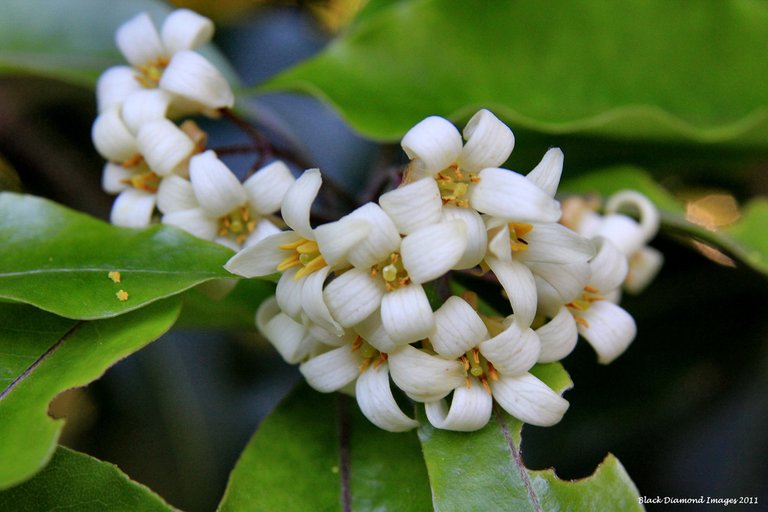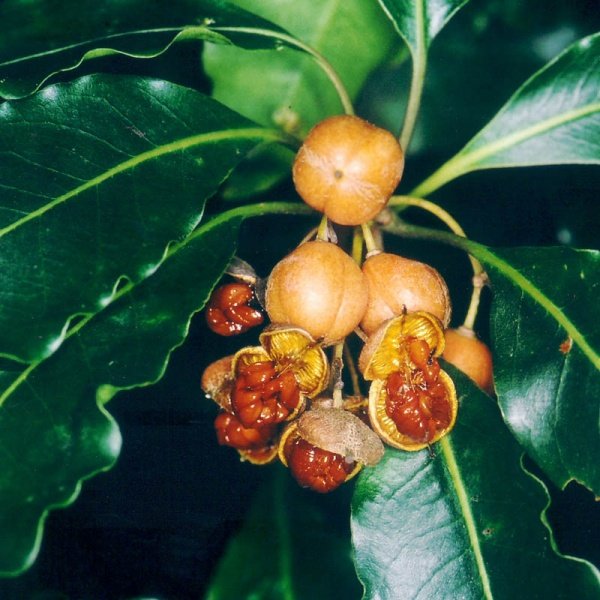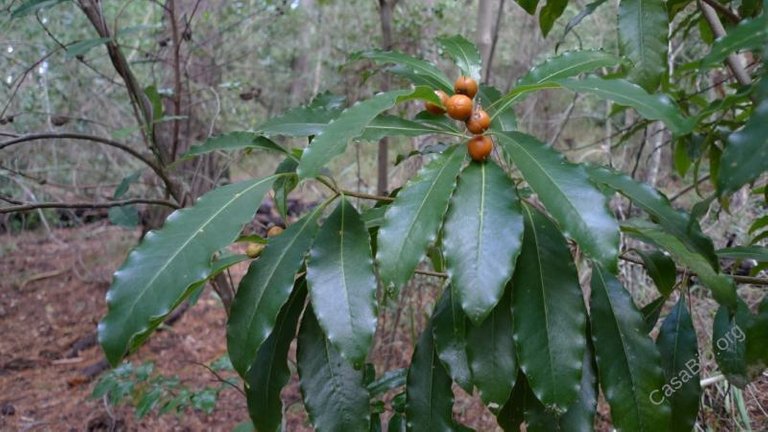Native to southeastern Australia, P. undulatum was widely introduced in the late 1800s as an ornamental tree, and it has now proven invasive in tropical, sub-tropical and warm temperate areas, especially on islands. It produces large numbers of fruits and its seeds are eaten by a wide range of frugivorous birds. It is a great colonizer of open, disturbed habitats, as well as being very shade tolerant. It is very competitive, shading out other vegetation, first invading relatively open forest and forming a dense understorey. It is especially threatening in sensitive island montane forests such as those found in the Azores, but also the Pacific islands, the South African fynbos, and even eucalyptus forests in Australia where it is considered a threat to the survival of native forests. It supports a dense soil seed bank and dense seedling recruitment and it also has a good capacity to resprout after cutting.
P. undulatum can reach 30 m high, though often to 12 m and with a straight trunk and regular branch arrangement in favourable situations, but in dry exposed locations it is a shrub up to 2-3 m. Large trees may have a broad canopy up to 7 m across. Bark is coarse and grey.
The leaves are about 75 mm long with toothed margins. Small, white, fragrant flowers occur in terminal clusters in spring and early summer and are followed by orange-tan berries 1 cm in diameter in autumn, which persist for several months


Leaves alternate, elliptic-oblong to oblanceolate, acuminate at apex, attenuate at base, entire, 6-16 cm long, glossy green above, paler beneath, membranous, margins undulate or flat, sometimes recurved; main vein sunken or raised adaxially, raised abaxially, secondary nerves about 12 per side, distinct; petioles 7-26 mm long, 1-2 mm wide. Inflorescences terminal, 4-15 flowered, subumbelliform; peduncles and pedicels 1.9-3.1 cm long, accresecent in fruit, tomentose; peduncles subtended by a whorl of leaves and numerous caducous, brown-tomentose, ciliolate bud scales 1 - 2 mm long; sepals frequently connate in a tube which splits into 2 parts, one 1 - 2-lobed, the other 3- to 4- lobed, lanceolate, acuminate 6.5-10.5 mm long 1.2-2.5 mm broad, tomentoluse, falling before the petals; petals, linear-lanceolate, to linear-oblong, obtuse, 11-17 mm long, 3-4 mm broad, coherent at the base, spreading to recurved above, creamy-white; stamens 5-11 mm long, sometimes reduced to sterile rudiments 0.5-1.0 mm long; anthers lanceolate-oblong to sagittiform, 2.5-5.0 mm long, 1.0-1.5 mm broad. Pistils at anthesis slightly shorter or longer than the stamens; ovary 4-6 mm long, 1.8-4.0 mm broad, tomentulose; style 2.0-4.5 mm long; stigma capitate and obscurely 2- to 4-lobed or almost truncate. Capsules sub-globose, 2-valved, 10-14 mm in diameter, yellow to brown, smooth to slightly rugose, glabrous; valves convex in transverse section, less than 1 mm thick, coriaceous, with placenta thickened at the base and bearing 2-3 rows of short stout peg-like funicles from the base to just above the middle; seeds 12-22 (-35), about 3 mm long, orangy red to dark red to black, irregular (from Cooper (1956) in Goodland and Healey, 1996).

sorce:
https://www.cabi.org/isc/datasheet/45705
Places exist of this plant in the world:

